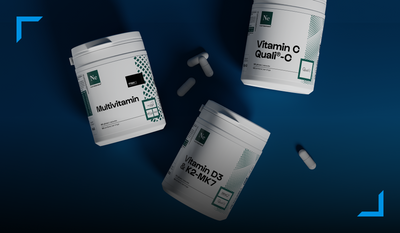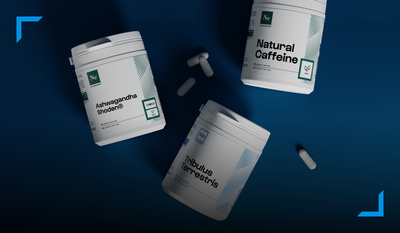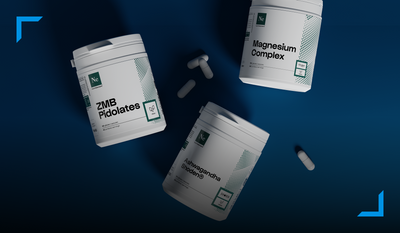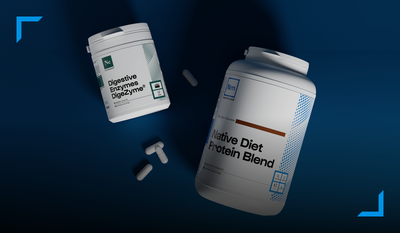0 commentaires
Omega-3 fatty acids, particularly eicosapentaenoic acid (EPA) and docosahexaenoic acid (DHA), play a crucial role in maintaining our health. They are essential for many bodily functions, including cardiovascular health, brain development and function, and reducing inflammation. However, our bodies cannot produce these fatty acids in sufficient amounts, so we need to get them through diet or supplements.
What are EPA and DHA?
Eicosapentaenoic acid (EPA) and docosahexaenoic acid (DHA) are types of omega-3 fatty acids, polyunsaturated fatty acids that are essential for the proper functioning of our bodies (Swanson et al., 2012). These fatty acids are called " essential " because our bodies cannot produce them in sufficient quantities, so they must be provided through diet.
EPA (eicosapentaenoic acid)
EPA plays a key role in reducing inflammation in the body. It is particularly important for cardiovascular health and proper functioning of the immune system (Calder, 2015).
DHA (docosahexaenoic acid)
DHA is crucial for the normal development and function of the brain and eyes. It contributes to the fluidity of cell membranes, thus promoting optimal cellular communication (Lauritzen et al., 2016).
EPA and DHA, benefits for the body
Cardiovascular health
EPA and DHA fatty acids play a crucial role in maintaining optimal heart function . They promote blood flow, reducing the risk of clots, and help lower blood triglyceride levels, a major risk factor for heart disease (Mozaffarian & Wu, 2011). In addition, they help regulate blood pressure and prevent atherosclerosis.
Anti-inflammatory effects
EPA and DHA have powerful anti-inflammatory properties . They can help reduce chronic inflammation, which is beneficial for people with inflammatory diseases such as arthritis (Calder, 2017). These fatty acids work by moderating the body’s inflammatory responses, helping to prevent and alleviate various inflammatory disorders (Swanson et al., 2012).
Brain development and functions
DHA is essential for optimal brain development and function . It plays a particularly important role during pregnancy and early childhood, contributing to fetal and infant brain and retinal development (Swanson et al., 2012). DHA supplementation may also support cognitive function throughout life.
Mental health
Studies show that omega-3s, particularly DHA, may help reduce symptoms of depression and anxiety (Grosso et al., 2014). They work by influencing neurotransmitters and inflammatory pathways in the brain, which can improve mood and overall mental health.
Vision
DHA is a major component of the membranes of retinal cells in the eye, contributing to normal vision . It helps maintain the structural integrity of retinal cells and plays a crucial role in the transmission of visual signals, which is essential for clear, healthy vision (SanGiovanni & Chew, 2005).
These multiple benefits demonstrate the importance of regular intake of EPA and DHA, either through diet or supplements, to support optimal health. Additionally, athletes should especially consider supplements that provide EPA and DHA, as these essential fatty acids can control inflammation, support the nervous system, maintain muscle mass after injury, and improve adaptation to training.
Sources of EPA and DHA
The main dietary sources of EPA and DHA are oily fish such as salmon, mackerel, sardines, herring, and anchovies. Consuming these fish several times a week can help achieve recommended intakes of these essential fatty acids (Kris-Etherton et al., 2009).
For those who do not regularly consume oily fish, fish oil provides a concentrated source of EPA and DHA and is often taken as a dietary supplement to ensure adequate intake (Arterburn et al., 2006). Another option is krill oil , valued for its potentially superior bioavailability and richness in natural antioxidants such as astaxanthin. For vegetarians and vegans, some algae provide a source of DHA.
Finally, although less rich in EPA and DHA than marine sources, vegetable oils such as canola oil and walnuts contain alpha-linolenic acid (ALA), another type of omega-3 that the body can convert to small amounts of EPA and DHA (Burdge & Calder, 2005).
Omega-3 in the form of dietary supplements represents a practical and effective solution to ensure an adequate intake of EPA and DHA, especially for those with diets limiting the consumption of oily fish or for specific health reasons (Kris-Etherton et al., 2009).
Scientific references
Arterburn, L.M., Hall, E.B., & Oken, H. (2006). Distribution, interconversion, and dose response of n-3 fatty acids in humans. The American Journal of Clinical Nutrition , 83(6), 1467S-1476S.
Burdge, G.C., & Calder, P.C. (2005). Conversion of α-linolenic acid to longer-chain polyunsaturated fatty acids in human adults. Reproductive Nutrition Development , 45(5), 581-597.
Calder, P. C. (2015). Marine omega-3 fatty acids and inflammatory processes: effects, mechanisms and clinical relevance. Calder, P. C. (2015). Marine omega-3 fatty acids and inflammatory processes: effects, mechanisms and clinical relevance. , 1851(4), 469-484.
Calder, P. C. (2017). Omega-3 fatty acids and inflammatory processes: from molecules to man. Biochemical Society Transactions , 45(5), 1105-1115.
Grosso, G., Pajak, A., Marventano, S., Castellano, S., Galvano, F., Bucolo, C., & Caraci, F. (2014). Role of omega-3 fatty acids in the treatment of depressive disorders: a comprehensive meta-analysis of randomized clinical trials. PloS one , 9(5), e96905.
Kris-Etherton, P. M., Grieger, J. A., & Etherton, T. D. (2009). Dietary reference intakes for DHA and EPA. Prostaglandins, Leukotrienes and Essential Fatty Acids , 81(2-3), 99-104.
Lauritzen, L., Hansen, HS, Jørgensen, MH, & Michaelsen, KF (2001). The essentiality of long chain n-3 fatty acids in relation to development and function of the brain and retina. Progress in lipid research , 40(1-2), 1-94.
Mozaffarian, D., & Wu, J. H. (2011). Omega-3 fatty acids and cardiovascular disease: effects on risk factors, molecular pathways, and clinical events. Journal of the American College of Cardiology , 58(20), 2047-2067.
SanGiovanni, JP, & Chew, EY (2005). The role of omega-3 long-chain polyunsaturated fatty acids in health and disease of the retina. Progress in retinal and eye research , 24(1), 87-138.
Swanson, D., Block, R., & Mousa, S.A. (2012). Omega-3 fatty acids EPA and DHA: health benefits throughout life. Advances in nutrition , 3(1), 1-7.



























